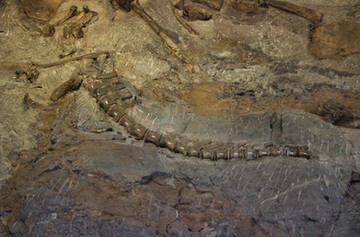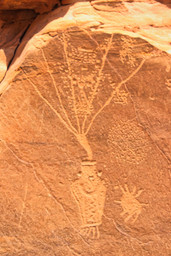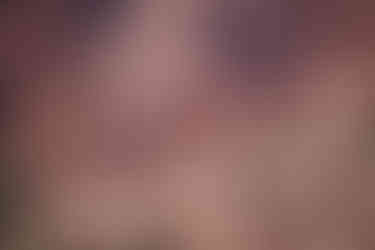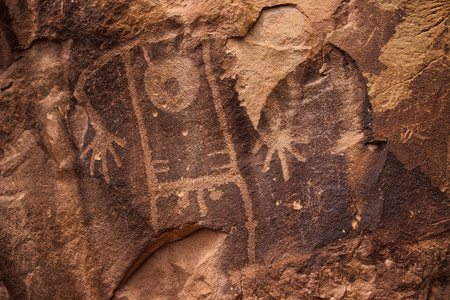Utah Revisited
- dougsmith51
- Aug 7, 2020
- 5 min read
Our intention for a while has been to move from Colorado northwest into Idaho, but with a couple of stops along the way. First up, five days in Moab, Utah.
We were in Moab last year over Memorial Day weekend. It was SUPER-crowded in 2019 (partly due to the holiday weekend), so it was so strange to see the town so uncrowded now (mostly due to COVID). Last year, we contacted at least 10 campgrounds before we found space in a campground stuck in a back canyon. This year, the campground where we stayed (right in town) was less than half-full at best.

Moab is another hotbed of all-terrain vehicle (ATV) activity. Several RVs in the campground had brought their toys with them.

We've been spoiled this summer being at higher elevations - the high temperatures have only been in the 70s and 80s. However, summer heat finally caught up with us in Moab.

We only have one air conditioning unit in the roof of the Ciaowagen (many RVs our size have two units) so it can have trouble keeping up it when it gets very hot outside. Based on our heat experience in Tucson this past May, we knew we needed to supplement when the weather got hot. Due to wiring limitations in our RV, it would be very expensive to add a second ceiling unit. Therefore, a couple months ago we ordered a portable room air conditioner from Amazon, and Jeannette (the designated creative problem solver in our marriage) jury-rigged a hot air exhaust solution so we could use it during our time in Moab. It definitely helped!
Due to the high heat, we didn't do as much hiking in Moab as we might ordinarily. However, we did try to get out and see the local sights.
We visited Utah's Dead Horse Point State Park, which provides amazing views from a high mesa overlooking the area. You can see the Colorado River winding through the area, as well as bright blue evaporation ponds from local potash mining operations.


The next day we visited Canyonlands National Park. That park is so large it has four different units with separate entrances. Our first visit was to the Island in the Sky unit, which is a mesa-top area not that far from Dead Horse Point State Park. We took a one-mile hike (a relatively flat one) out to Grand View Overlook.



The trail runs along the mesa rims, and we had amazing views of canyons 2,000 feet below from both sides.


We also drove to a parking area overlooking the Green River, which merges with the Colorado about 20 miles below this point. The river canyon's sandstone rim has a very distinctive white color. We could also see sections of backcountry driving trails (Canyonlands NP has more than 100 miles of them).


Finally, we did a short hike to Mesa Arch, which frames an amazing view of the country below.

Arriving back in Moab at the end of the day, we stopped to see the Colorado River, which flows through town. It's a lot bigger than when we saw it near its headwaters in Rocky Mountain National Park.
Many people come to Moab just to see Arches National Park which sits right outside of town. To beat the heat, we waited until after dinner one evening and visited Arches during "the Golden Hour," the hour before sunset when the setting sun casts everything in a red-golden glow. We weren't disappointed!






We stayed till after dark, sitting in beach chairs in a small empty parking lot and staring up at the sky. The full moon had risen, blocking out the Milky Way and many of the dimmer stars, and illuminating the landscape. In the picture below, you can see the stars of the Big Dipper!


The next day we visited "The Needles" unit of Canyonlands National Park. It's easy to see how it got its name.

On the drive to the park entrance, we passed through Bears Ears National Monument, where we stopped at Newspaper Rock, a famous petroglyph site with images spanning a 2,000 year period.
Because it was SOOOOO hot (107 degrees in the shade) we spent most of the day in what is derisively called "windshield wilderness" mode. That said, there were many amazing sights along the road, which we pretty much had to ourselves (we saw perhaps 10-15 other people total during our 6 hours in the park).





On our way out of the park, we did a short hike through an area with rock overhangs and a spring. It had housed both Native Americans (we saw some of their art as well as a corn milling area) and, in more recent times, cowboys.






On our last full day in Moab, we hit up Arches National Park twice, trying to avoid the hottest part of the day. In the morning, we traveled to the Devils Garden area.

It's an area with several large arches, and we hiked to see Skyline Arch...
...Window Arch...

...Pine Tree Arch...

...and, most impressive for us, the amazing Landscape Arch, which spans a couple of hundred feet and is so thin it looks like it could collapse at any minute.

We ate an early dinner, and then drove back to the park for the hike up to Delicate Arch. If you've ever seen a Utah license plate, you'll know Delicate Arch.

The evening hike to see the sunset colors light up the arch is quite a popular one. The hike is rated "moderate strenuous," 1.5 miles each way, with a vertical climb of about 500 feet. Part of the trail is up a long slickrock slope.
Toward the end, you walk along a narrow ledge and then suddenly come on the arch.

Doug had hiked this trail 29 years ago when Jeannette was six months pregnant with our son Mace. Although she had done some other hiking on that Utah trip, she decided to sit this one out, and Doug ended up hiking up with our Dutch au pair Janine. Accordingly, Doug was very glad that Jeannette could make the hike up with him this time. It's one thing to see Delicate Arch with binoculars from afar, but quite another to be right there.

The sun set and we hiked back down. It was an interesting sight to see some of the stragglers coming down behind us with their flashlights.

We left the Moab area and traveled north to visit Dinosaur National Monument, which lies near in the northwest corner of Colorado. It has an impressive collection of dinosaur fossils, many of which have been left in situ.
Discovered in the early 1900s, this formation from 150 million years ago was extensively quarried, with many skeletons being removed and placed in museums all over North America.

Earl Douglass, the paleontologist who first discovered the formation, petitioned the government to leave a section of the quarried formation in place, exposing the bones, and protecting it from the elements. A modern exhibit hall protects a hillside (originally a river bed, now tilted and uplifted) with over 1500 fossil bones. Due to COVID-19, the park had established timed entry for the exhibit hall, so it wasn't very crowded and we could take our time examining the bones. To get to the quarry, you take an open-air shuttle from the Visitor Center to the exhibit hall.


We'd seen some fossils outdoors before, but nothing like this!
There was even a location where you could touch some of the bones (Doug couldn't resist).

Rather than taking the shuttle back to the Visitor Center, we hiked back along the Fossil Discovery Trail. One set of fossils we ran across were tiny clams.

Dinosaur National Monument is quite large, spanning parts of both Utah and Colorado, and 90% of it is designated wilderness. It's quite a pretty area which would merit national monument status on its own even without the fossils. As we drove through a section of the park, we saw a couple of areas with extensive petroglyphs.
We passed by the aptly-named Elephants Toes butte.

There were also many sweeping vistas of mountains and the Green River.



It was time to move to Idaho to spend the rest of August. We were very glad to have revisited Utah, though, to see some old places again and to discover new ones.














































Comments